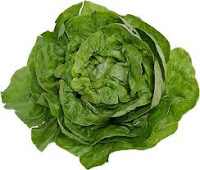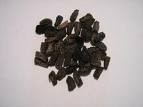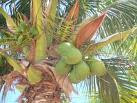The garden pea is one of the oldest species of food plant that has been cultivated, and is thought to have originated in western Asia and North Africa. The Latin word pisum derives from the Greek, pisos or pison which translated as pise in Anglo-Saxon and then became pease. By the 1600s this had become pea as pease was believed erroneously to have been a plural form. It is believed that there were three main centres of pea development; Afghanistan and Pakistan, the Near East and Ethiopia. Wild peas thought to be descendants of the original pea plants still grow in Iran, Afghanistan and Ethiopia. From these regions they moved to the Mediterranean and the Far East.
 The first evidence we have so far is that wild peas were used around 9759BC, as traces of them have been found in the so-called “Spirit Cave” on the borders of Myanmar and Thailand. Excavations in Jarmo, in north-western Iraq have also found traces of wild peas dating from between 7000 and 6000 BC. Swiss Bronze Age villages show that peas were being consumed there around 3000 BC and we know that in 500 BC the Greeks and Romans were cultivating them. These may have come from Switzerland or via the trade routes in Asia. In Athens street vendors were selling soup made from dried peas.
The first evidence we have so far is that wild peas were used around 9759BC, as traces of them have been found in the so-called “Spirit Cave” on the borders of Myanmar and Thailand. Excavations in Jarmo, in north-western Iraq have also found traces of wild peas dating from between 7000 and 6000 BC. Swiss Bronze Age villages show that peas were being consumed there around 3000 BC and we know that in 500 BC the Greeks and Romans were cultivating them. These may have come from Switzerland or via the trade routes in Asia. In Athens street vendors were selling soup made from dried peas. In 25 BC Apicius included nine recipes for peas in his cookery book, but at the time peas were dried and then eaten; they were not eaten fresh. Apicius gives recipes for dried peas with vegetables and with meats, so they must have been used in much the same ways as we use them today.
 By the 7th century AD peas were being cultivated in China, and were called “hu tou” or “foreign legumes”, but there is a legend dating from earlier times which says that the Emperor Shu Nung, known as the Father of Agriculture in China, who lived 5000 years ago discovered peas. A Norse legend tells how Thor was angry with mortals and sent dragons to foul up the water supplies. The clumsy beasts dropped peas on fertile land and they grew which of course further angered Thor, so people dedicated the pea to him and only ate them on Thor’s Day or Thursday.
By the 7th century AD peas were being cultivated in China, and were called “hu tou” or “foreign legumes”, but there is a legend dating from earlier times which says that the Emperor Shu Nung, known as the Father of Agriculture in China, who lived 5000 years ago discovered peas. A Norse legend tells how Thor was angry with mortals and sent dragons to foul up the water supplies. The clumsy beasts dropped peas on fertile land and they grew which of course further angered Thor, so people dedicated the pea to him and only ate them on Thor’s Day or Thursday. Peas were dried and stored for use in winter months and were not eaten fresh for centuries. The marrowfat pea is the starchy one that is still usually dried and eaten in soups, and served as mushy peas along with mashed potatoes and sausages in some parts of London. (This dish is known as Liquor and Mash.) It wasn’t until late in the 17th century that eating fresh peas became fashionable, but as with all fashionable things served as delicacies, fresh peas were food for the rich as they were expensive. The poorer classes continued to eat dried peas. In the 1800s and later, dried peas were an important staple for European peasants.
 Although we think of peas as vegetables they are a legume, as they grow in pods, some of which are edible, such as the mange tout or snow pea and the snap pea. These frequently appear in stir-fried dishes. Some snap peas need to have the vein removed from their pods before cooking.
Although we think of peas as vegetables they are a legume, as they grow in pods, some of which are edible, such as the mange tout or snow pea and the snap pea. These frequently appear in stir-fried dishes. Some snap peas need to have the vein removed from their pods before cooking. By the 14th century the Italians had bred tiny peas they called piselli novelli (new peas) and when Catherine De Medici married Henri II of France she took these new mini-peas with her. The French adored them and called the petit pois (little peas), the name by which they are still known. By the 1560s peas were a traditional dish eaten at Lent throughout most of Europe. And in the time of King James I (1566-1625) London street sellers were selling “Hot grey peas and a suck of bacon.” (Marrowfat peas are still traditionally cooked with a ham bone.)
 James Campbell of the Campbell Soup Company canned peas first in the 1870s and they were one of the first vegetables to be frozen also in the 1920s and 30s.Clarence Birdseye was the first to freeze peas. Freezing peas actually locks in the nutrients and frozen ones are packed full of goodness, only comparable to freshly picked and shelled peas straight from the garden or allotment. Bags of frozen peas are good to put on black eyes and swellings too.
James Campbell of the Campbell Soup Company canned peas first in the 1870s and they were one of the first vegetables to be frozen also in the 1920s and 30s.Clarence Birdseye was the first to freeze peas. Freezing peas actually locks in the nutrients and frozen ones are packed full of goodness, only comparable to freshly picked and shelled peas straight from the garden or allotment. Bags of frozen peas are good to put on black eyes and swellings too. To cook fresh peas you should barely cover them in water, then bring them to the boil, cover with a lid and simmer for 3 minutes. Don’t discard the water as it will contain vitamin C so use it as a base for gravy or stock.
Apart from vitamin C peas contain proteins, sugar and starch, phytonutrients, one a polyphenol, coumestrol, which is thought to protect against stomach cancer. One study has also found that this might reduce the risks of prostate cancer. Coumestrol is believed to have antioxidant and anti-inflammatory properties. Peas also contain some unique (or so it is currently thought) saponins, pisumsaponins 1 and II and pisomosides A and B along with other phytonutrients such as caffeic and ferulic acids. These may be beneficial to people who suffer from Type-2 diabetes. Peas also contain the flavonoids catechin and epicatechin. Although they are low in fat they contain the Omega-3 fatty acid in the form of alpha-linoleic acid (ALA) as well as beta-carotene, Vitamin E which supports the immune system and bone-building vitamin C and manganese. They also contain other minerals such as potassium, copper, magnesium, zinc and B- complex vitamins. They are good for the bones and protect the heart too. Peas help the body to reduce its blood cholesterol levels and may protect against appendicitis.
 Research is being undertaken currently and will hopefully reach its conclusions in 2013 in the University of Saskatchewan in Canada, to discover whether a diet of legumes (including peas) and aerobics exercise can help women suffering from Polycystic Ovary Syndrome. In 2009, another Canadian study found that the proteins extracted from garden peas may reduce blood pressure and benefit those suffering from Chronic Kidney Disorder.
Research is being undertaken currently and will hopefully reach its conclusions in 2013 in the University of Saskatchewan in Canada, to discover whether a diet of legumes (including peas) and aerobics exercise can help women suffering from Polycystic Ovary Syndrome. In 2009, another Canadian study found that the proteins extracted from garden peas may reduce blood pressure and benefit those suffering from Chronic Kidney Disorder. You may have wondered about the etiquette of pea eating; you should spear peas on the prongs of your fork and then load more onto the back of it as they will then be kept in place by the peas on the prongs. Here is an Ode to Peas, the author is not known:
“I eat my peas with honey.
I’ve done it all my life.
It makes the peas taste funny,
But it keeps them on my knife.”
Peas feature in the 16th century sex manual, “The Perfumed Garden” written by Sheikh Nefzaoui who recommended them to be boiled with onion and cinnamon and used as an effective aphrodisiac. However peas contain oestrogenic chemicals which may decrease male fertility.
 In the 19th and early 20th century, London fogs were called “pea-soupers” because of their density and the green tinge they had. However the grey soup of those early street vendors was quite like fog, I imagine.
In the 19th and early 20th century, London fogs were called “pea-soupers” because of their density and the green tinge they had. However the grey soup of those early street vendors was quite like fog, I imagine. Peas have come into the English language in similes, “as alike as two peas in a pod” meaning things or people are identical; “just like shelling peas” meaning that something is extremely easy to do. (Easy-peasy reflects the same concept too.) There is also the Hans Christian Andersen tale of “The Princess and The Pea” which featured the dried variety of pea, and Edward Lear’s poem, “The Owl and The Pussycat” who “went to sea in a beautiful pea-green boat.”
In Pakistan, peas are traditionally eaten with keema (minced or ground meat) and potatoes, but here is a recipe for peas in a salad. Cook the peas as explained above.
Ingredients
1 tin tuna drained and flaked
2 spring onions
50 gr shelled peas, cooked
2 tomatoes, roughly chopped
mayonnaise
Method
Mix all the ingredients together and serve on a bed of whole Cos lettuce leaves garnished with slices of cucumber, unpeeled, and sliced radishes or mooli.
This has Taste and is a Treat.


















































